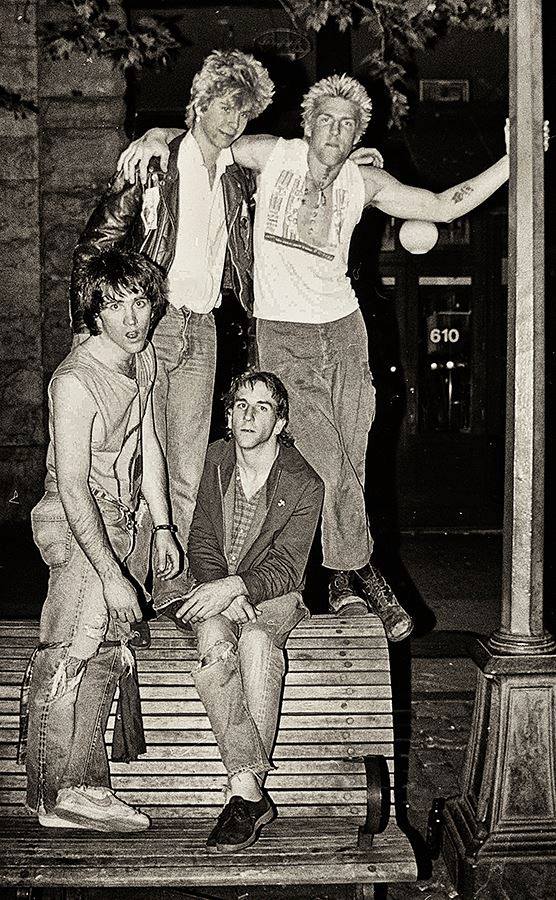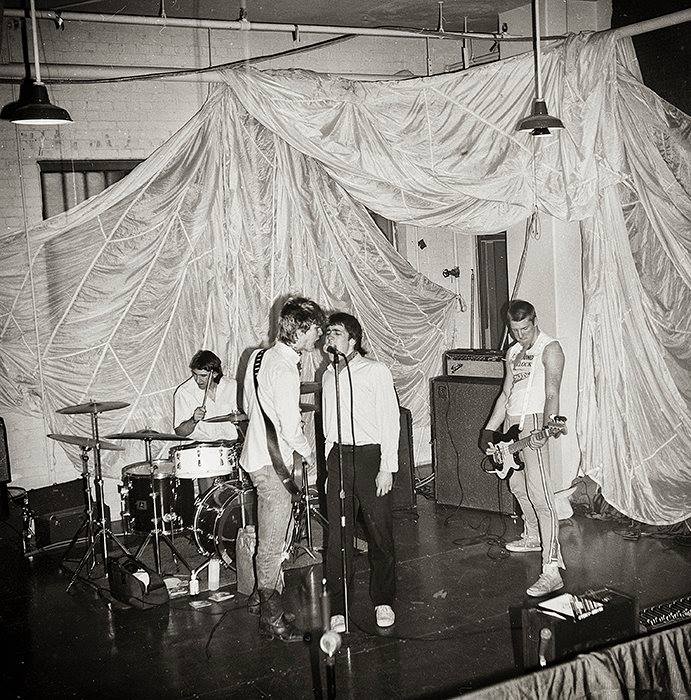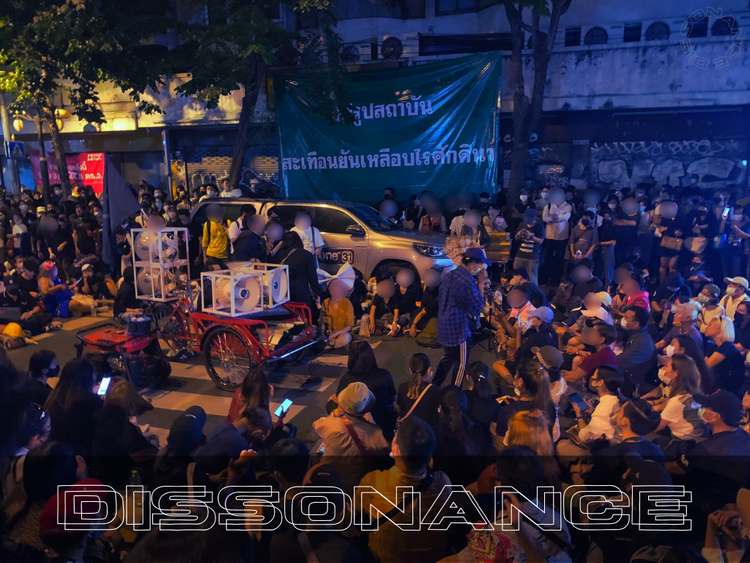A Puget Sound Punk Time Capsule

Punk, 1982: Origins and Riots
The Pacific Northwest (PNW), externally known for its dreary days and cold-shouldered residents, also lays claim to a piece of American music history. The PNW is widely recognized as the progenitor of the exceedingly popular grunge genre of the 90s. Grunge, the fusion of punk, heavy metal, and with elements of indie rock, emerged in the mid-1980s and was accelerated by the Seattle independent record label Sub Pop’s strategic marketing. By the 1990s, bands like Nirvana, Pearl Jam, and Soundgarden steered grunge to become the most popular sub-rock genre, before its decline in prominence in the late 1990s.
The region’s musical seeds were being planted long before the rise of grunge. Punk, one of the key influencers of grunge, had emerged a decade earlier in the mid-1970s, evolving from 1960s garage rock and rejecting the mainstream music of its time. Punk is marked by its fast-paced songs, anti-establishment lyrics and “do it yourself” (DIY) beliefs.
Punk faced opposition in its early days – to which, loyal punk fans opposed right back. John Conte, parent of Horizons Chief Copy Editor Ian Conte, was the vocalist of Seattle punk band the Living in the early 80s. Conte explained that the college student-permeated crowds of the time wanted “cover bands and heavy metal, or dance music…Fights would break out between those types of crowds and us punks.” Rival scenes aside, punk still had its share of steadfast supporters.

The Living’s time together was relatively short, just about 16 months in 1981 and 1982, but its impact has extended far beyond that lifetime. Alongside Conte were drummer Greg Gilmore, bassist Todd Fleischman and guitarist Duff McKagan, who was just 17 years old at the time. McKagan would later join the rock band Guns N’ Roses.
Their legacy is also tethered to one specific gig the Living played alongside local band Fastbacks in the summer of 1982. It was a hot August, as Conte described, and the band had just come off of a hiatus after they had “been blacklisted by a certain gentleman who had control of lots of venues.” Their temporary embargo, all over a minor spat with a rejected manager, hadn’t lasted too long. In preparation, the band rehearsed as much as they could at their artist’s loft above a pizza shop and a record store, located in the University District.
The event left such an impression on its attendees that it was chronicled in The Seattle Times. Dave Dederer, guitarist of The Presidents of the United States of America and current head of business development in Amazon Alexa music and audio, wrote about the concert 20 years after the fact, further attesting to the magnitude of the spectacle the event must have been. In these exact words, Dederer described the concert as the “GREATEST ROCK SHOW OF ALL TIME.”
What made the summer show so great?
The Roscoe Louie, which opened in 1978 in Pioneer Square, was the latest in a growing trend of art galleries dedicated to the intersection of visual and auditory art. Art galleries of the 80s experiencing a lack of visitors had devised a new strategy to attract Seattleites to their collections, where they would hire a local band, set out some beer, and wait for the people to roll in. Dederer wrote that a gallery could “rent a space, hang out a shingle that says ‘gallery,’ and you’re ready to go: paintings, parties, punk rock – whatever you want.” This gig was 21+ only, and Conte remembered the smell of alcohol in the air.
The Living was a hit. They were the opening act, which Conte preferred: “sometimes being the headliner, everyone is too drunk to remember the show” by that point in the evening. Dederer recalled that during the Living’s portion, the crowd was “slam dancing and bumping into the band and sweating,” all indicators of a great show.

At the venue, Derderer said “there was no stage, no differentiation between the band and crowd.” Everyone was “one big steamy ball of energy.” After the Living finished their set, its members, many of whom were underage, were effectively required to leave the 21+ only venue. Conte left after watching the Fastbacks’ high-energy performance.
Conte’s recounting of the rest of the evening is based on what he heard transpired that night after he left. After the concert ended, some “rowdy types of punks” without rides “started marching together as a small band of people, breaking windows of cars.” At one point, they even “busted out a parked police vehicle’s windows,” Conte remarked.
The rowdy crowd, riled by the energy of the concert and the liquor at the scene, with punk pounding in their ears and in their hearts, started a small riot that traversed from Roscoe Louie to the University District.
Why did the rowdy punks riot?
Well, one reason was that they were simply trying to get home, as many in the group lived in the University District. Their nearly five-mile riot went through the heart of downtown Seattle and crossed the University Bridge before the pack dispersed into their neighborhood.
The miniature riot was emblematic of the PNW punk scene in the early 1980s. Dederer expressed that the bands were composed of “kids from my neighborhood, playing loud and fast and pretty damn good, too.” The Living and the Fastbacks played for a crowd of other local kids, who enjoyed music loud and fast and pretty damn good, too; together, packed in a tight and sweaty gallery, acting as one community ball of energy, enthusiasm, and excitement. That was punk.
Punk, 2021: Youth and Bridges
How has punk changed in the years since the Living and the Fastback summer concert of 1982?
Jack Moriarity grew up surrounded by music, having played guitar since five or six and brought along to shows with his parents. Both Moriarity and Conte are now based in Port Orchard, a small town 10 miles west and an hour ferry ride from downtown Seattle. Moriarity is deeply familiar with the PNW punk scene of 2021 as both a fan and as a musician.
Moriarity, deeply proud of punk’s origins, described more of the PNW’s music history: “In the 1960s, the PNW was a big capital for cover bands and classic rock and roll music; bands like the Sonics and the Ventures were from Tacoma.” This base in cover bands and rock and roll continued into the 1970s and 1980s, before the advent of punk. Moriarity expressed that punk went against the status quo of music at the time, that “it was creative, it was unique, it was original.”
Today, punk is as strong as ever and hasn’t strayed far from its founding principles. Though the art gallery-turned punk venues have all shuttered their doors, unconventional venues continue to be the norm for punk concerts. Moriarity has attended his fair share of basement and living room gigs, as well as some at an old movie theater converted to a venue with “graffiti all over the walls and stickers everywhere,” in proper punk fashion. Punk has “always leaned to grungy, dirty spaces, that’s the whole style,” said Moriarity.
The best concerts, according to Moriarity, are those in a “dingy, small place…the energy just automatically flows in a place like that.” Just as Conte and Dederer described the concerts in the early years of punk, there is “not really a disconnect between the performer and the fans,” says Moriarity, “everyone’s sweaty, it’s overwhelming but exciting at the same time.”
Whenever Conte would take tickets at the Living’s sets, he would always let in kids who were short on the cover fee. And it wasn’t just Conte waiving fees; punk was a tight-knit community who wouldn’t turn a fellow fan or friend away. In the 40 years since, that attitude has been formalized. Moriarity shared today’s concept of “NOTAFLOF,” or “No One Turned Away For Lack Of Funds,” a mantra mutually accepted between the community of local bands.
Like many aspects of daily life, the punk scene has been forced to evolve since the COVID-19 pandemic began. In creative punk form, determined to play and listen to live music regardless of venue or pandemic, the new “generator show” has been formed, where a generator is thrown into a truck and the mobile concert is taken to an outdoor spot with plenty of space in an attempt to minimize transmission risks.

A local favorite spot for generator shows has emerged: under the 1st Avenue bridge in the southend of Seattle. Tucked away in an unassuming place, under the speeding cars, is a high-energy punk concert in the underpass. Perhaps those in the cars above, as they listen to NPR, pop radio, perhaps on a phone call, or maybe in silence, might pause at the slight rumble less than a second in length as they pass over the punk crowd, before dismissing the sound as the routine rumble of the road. Everyone is submerged in their own little world, whether in the sounds of the daily commute or packed in the crowd below, enveloped in the sound of punk.
Where will punk go next?
As Moriarity explained, “movements have come and gone,” but the scene is returning to its origins, “getting back into a really exciting form of anti-establishment punk music.” As the music itself ebbs and flows, so do the people involved. Moriarity has noticed a trend of young talent engaging in the scene. For him, seeing “that many kids showing up in packs to see live music” gives him “a lot of hope about the future.”
Maybe sometime this next hot August, a miniature riot will commence from the underpass of the 1st Avenue bridge to some five-mile away destination, to commemorate the 40 year anniversary of Conte’s concert. That would be punk.
This piece was originally published on Nov. 24, 2021 in Horizons Newspaper, the student-run publication from the Embry-Riddle Aeronautical University's Prescott campus.




